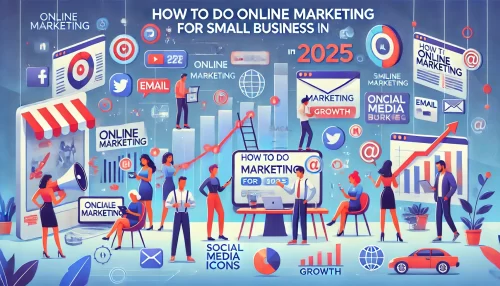Table of Contents
Business tips for success are essential for anyone looking to thrive in the competitive world of entrepreneurship. Implementing effective strategies can significantly boost your business performance, helping you achieve long-term success.
In this article, we’ll explore various actionable tips and techniques that can help you take your business to the next level.
Understanding the Foundations of Business Success
Understanding the foundations of business success is crucial for any entrepreneur. Building a strong foundation ensures your business can withstand challenges and thrive in the long run. My recommendation is to focus on creating a solid business plan, conducting thorough market research, and developing a resilient business model.
One of the most important aspects of business success is having a clear vision and strategy. This involves setting achievable goals, understanding your market, and being prepared to adapt as needed. I strongly believe that a well-thought-out plan can make the difference between success and failure.
Developing a Strong Business Plan
Developing a strong business plan is the first step towards achieving business success. I advise you to start with a detailed outline that includes your business goals, target market, and strategies for growth. A comprehensive business plan acts as a roadmap, guiding you through the various stages of your business journey.
Most importantly, your business plan should be flexible. I recommend you to revisit and update it regularly to reflect changes in the market or your business environment. This adaptability ensures that your business remains relevant and competitive.
Furthermore, I suggest including financial projections and funding strategies in your plan. This will help you manage your resources effectively and plan for future growth. Remember, a well-prepared business plan can also attract potential investors and partners.
Finally, my advice is to seek feedback on your business plan from mentors or industry experts. Their insights can provide valuable perspectives and help you refine your strategies for better results.
Importance of Market Research
Conducting thorough market research is a critical component of business success. Market research provides insights into your target audience, competitors, and industry trends. I believe that understanding these elements can significantly enhance your strategic planning and decision-making processes.
My suggestion is to start with primary research, such as surveys, interviews, and focus groups. These methods allow you to gather direct feedback from your potential customers, helping you understand their needs and preferences.
Additionally, I recommend you to utilize secondary research, including industry reports and competitor analysis. This information can provide a broader view of the market landscape and identify potential opportunities and threats.
Most importantly, market research should be an ongoing process. I advise you to regularly update your research to stay informed about changing market conditions and consumer behaviors. This continuous effort will help you stay ahead of the competition.
Lastly, I point out the value of using market research to validate your business ideas. Testing your concepts before fully committing can save time and resources, ensuring that you focus on viable opportunities.
Building a Resilient Business Model
Building a resilient business model is essential for long-term success. A resilient business model can adapt to market changes and withstand economic fluctuations. I suggest focusing on creating a flexible and scalable business structure.
One key aspect of resilience is diversifying your revenue streams. I recommend exploring multiple sources of income to reduce dependency on a single revenue stream. This approach can provide stability and protect your business during downturns.
Another important factor is cost management. My advice is to keep a close eye on your expenses and look for ways to optimize your operations. Efficient cost management can improve your profitability and free up resources for investment in growth opportunities.
I also believe in the importance of innovation. Continuously seeking new ways to improve your products or services can keep your business competitive and relevant. I strongly believe that fostering a culture of innovation within your team can lead to breakthrough ideas and sustainable success.
Finally, I recommend you to build strong relationships with your stakeholders, including customers, employees, and suppliers. These relationships can provide support and resources that are crucial during challenging times, contributing to the resilience of your business.
Effective Marketing Strategies for Business Growth
Effective marketing strategies for business growth are essential to reach your target audience and achieve success. Implementing the right strategies can help you stand out in a competitive market and attract more customers. My recommendation is to focus on leveraging social media, optimizing content marketing, and utilizing email marketing campaigns.
Most importantly, you need to understand your audience and tailor your marketing efforts to meet their needs. I believe that personalized and targeted marketing can significantly increase engagement and conversion rates.
Leveraging Social Media for Brand Awareness
Leveraging social media for brand awareness is a powerful strategy to grow your business. Social media platforms provide a vast audience that you can reach with the right content. I suggest starting by identifying the platforms where your target audience is most active.
Creating engaging and shareable content is key. I advise you to use a mix of visuals, videos, and interactive posts to capture the attention of your audience. Regularly posting and interacting with your followers can help build a loyal community around your brand.
My recommendation is to utilize social media advertising to amplify your reach. Platforms like Facebook, Instagram, and LinkedIn offer targeted advertising options that can help you reach specific demographics. I believe that investing in social media ads can yield high returns if done correctly.
Finally, I point out the importance of monitoring and analyzing your social media performance. Tools like Zoho Social and native platform insights can provide valuable data on what works and what doesn’t. Use these insights to refine your strategy and improve your results.
Content Marketing and SEO Optimization
Content marketing and SEO optimization are crucial for attracting organic traffic to your website. High-quality, relevant content can position your business as an authority in your industry. I recommend starting with a content strategy that aligns with your business goals and audience interests.
Most importantly, focus on creating valuable content that addresses the needs and pain points of your audience. I suggest incorporating various formats such as blog posts, videos, infographics, and podcasts to keep your content fresh and engaging.
SEO optimization is essential for ensuring your content ranks well on search engines. My advice is to conduct keyword research to identify the terms your audience is searching for. Use these keywords naturally throughout your content, including in headings, meta descriptions, and alt text for images.
I strongly believe that building backlinks from reputable sites can boost your SEO efforts. Reach out to industry blogs and websites for guest posting opportunities and collaborations. This not only improves your SEO but also increases your brand visibility.
Finally, I advise you to regularly update your content to keep it relevant and accurate. Search engines favor fresh content, and your audience will appreciate up-to-date information. Regular updates can also help you stay ahead of industry trends and changes.
Utilizing Email Marketing Campaigns
Utilizing email marketing campaigns is an effective way to nurture leads and retain customers. Email marketing allows you to communicate directly with your audience and build a relationship over time. I suggest starting with building a quality email list through opt-ins on your website and social media.
Personalization is key to successful email marketing. I advise you to segment your email list based on customer behavior and preferences. This enables you to send targeted emails that resonate with each segment, increasing engagement and conversion rates.
Creating compelling email content is essential. My recommendation is to use a mix of informative content, promotions, and personalized offers to keep your subscribers interested. I believe that a well-crafted email can drive significant traffic to your website and increase sales.
Most importantly, monitor the performance of your email campaigns. Tools like Mailchimp and Constant Contact provide detailed analytics on open rates, click-through rates, and conversions. Use this data to refine your campaigns and improve your results.
Finally, I suggest maintaining a consistent email schedule to keep your audience engaged. Regular communication helps build trust and keeps your brand top-of-mind for your subscribers.
Financial Management for Sustainable Success
Financial management for sustainable success is vital for any business. Properly managing your finances ensures long-term stability and growth. I advise you to focus on budgeting, tracking expenses, making smart investments, and efficiently managing cash flow.
Most importantly, developing a comprehensive financial strategy tailored to your business needs can provide a strong foundation for success. My recommendation is to regularly review and adjust your financial plans to adapt to changing market conditions and business goals.
Budgeting and Expense Tracking
Budgeting and expense tracking are fundamental aspects of financial management. I strongly believe that creating a detailed budget helps you allocate resources effectively and avoid overspending. My suggestion is to start by listing all your income sources and categorizing your expenses.
Tracking your expenses meticulously is crucial. I recommend using accounting software or tools to monitor your spending in real-time. This approach allows you to identify any unnecessary expenditures and make adjustments promptly.
Most importantly, a well-maintained budget can help you plan for future investments and growth opportunities. I advise you to set aside a portion of your revenue for unexpected expenses and emergencies, ensuring your business remains financially resilient.
Additionally, regularly reviewing your budget is essential. My advice is to compare your actual spending with your budgeted amounts monthly. This practice helps you stay on track and make informed financial decisions that align with your business objectives.
Investment Strategies for Business Growth
Investment strategies for business growth play a significant role in achieving sustainable success. I recommend diversifying your investments to spread risk and maximize returns. Consider investing in different areas such as technology, marketing, and employee development.
My suggestion is to conduct thorough research before making any investment decisions. Analyze market trends, consult with financial advisors, and evaluate the potential return on investment (ROI) for each opportunity. I strongly believe that informed decisions lead to better financial outcomes.
Most importantly, reinvest a portion of your profits back into your business. This could include upgrading equipment, expanding your product line, or enhancing your marketing efforts. Reinvesting in your business can drive growth and improve your competitive edge.
Furthermore, I advise you to explore external funding options if necessary. This could include loans, grants, or attracting investors. Securing additional funding can provide the capital needed for significant growth initiatives and help you scale your business faster.
Managing Cash Flow Efficiently
Managing cash flow efficiently is critical for maintaining business operations and achieving financial stability. I suggest creating a cash flow forecast to predict your future cash inflows and outflows. This forecast helps you plan for periods of low cash flow and ensure you have sufficient funds to cover expenses.
My recommendation is to regularly monitor your accounts receivable and follow up on overdue invoices promptly. Implementing an effective invoicing system can reduce delays in payments and improve your cash flow. I believe that maintaining good relationships with your clients and offering flexible payment options can also facilitate timely payments.
Most importantly, control your expenses by negotiating better terms with suppliers and seeking cost-saving opportunities. I advise you to review your contracts periodically and explore alternative suppliers to ensure you are getting the best value for your money.
Finally, I strongly recommend building a cash reserve to buffer against unexpected financial challenges. A healthy cash reserve can provide the liquidity needed to navigate difficult times without compromising your business operations.
Enhancing Customer Experience and Satisfaction
Enhancing customer experience and satisfaction is crucial for any business aiming for long-term success. Satisfied customers are more likely to become repeat buyers and recommend your business to others. I recommend focusing on understanding customer needs and delivering exceptional service to meet those needs.
Most importantly, investing in customer experience can lead to increased loyalty and higher revenue. My suggestion is to consistently seek ways to improve your interactions with customers, ensuring they have a positive and memorable experience with your brand.
Implementing Customer Feedback Systems
Implementing customer feedback systems is a vital step in enhancing customer experience and satisfaction. I advise you to establish multiple channels for customers to provide feedback, such as surveys, feedback forms, and social media platforms. These channels make it easy for customers to share their thoughts and experiences.
Most importantly, actively listening to customer feedback helps you identify areas for improvement. I strongly believe that responding to feedback shows customers that you value their opinions and are committed to improving their experience. My recommendation is to regularly review feedback and use it to make informed decisions about product and service enhancements.
My advice is to close the feedback loop by informing customers about the changes you’ve made based on their suggestions. This transparency can build trust and show customers that their feedback leads to tangible improvements. I suggest leveraging tools like Net Promoter Score (NPS) to measure customer satisfaction and track progress over time.
Finally, I point out the importance of training your team to handle feedback professionally and constructively. Equipping your staff with the skills to address customer concerns effectively can lead to better customer interactions and increased satisfaction.
Personalizing Customer Interactions
Personalizing customer interactions is a powerful way to enhance customer experience and satisfaction. I recommend using customer data to tailor your communications and offers to individual preferences and behaviors. Personalization makes customers feel valued and understood.
Most importantly, leveraging customer relationship management (CRM) systems can help you manage and analyze customer data efficiently. My suggestion is to segment your audience based on their purchase history, preferences, and demographics. This allows you to deliver targeted and relevant content.
I believe that personalization should extend beyond marketing communications. I advise you to train your customer service team to recognize repeat customers and personalize their interactions accordingly. Addressing customers by their names and referencing past interactions can create a more engaging experience.
Additionally, I strongly believe in the power of personalized product recommendations. Using algorithms to suggest products based on customers’ past purchases and browsing behavior can increase sales and enhance customer satisfaction. My recommendation is to implement these personalized touches across all customer touchpoints, both online and offline.
Providing Excellent Customer Support
Providing excellent customer support is essential for maintaining high levels of customer satisfaction. I suggest investing in a knowledgeable and responsive customer support team that can address customer issues promptly and effectively. Quality support can turn a negative experience into a positive one.
Most importantly, offering multiple support channels, such as phone, email, live chat, and social media, ensures that customers can reach you in their preferred way. I advise you to monitor these channels regularly and respond to inquiries as quickly as possible.
My recommendation is to equip your support team with the tools and training they need to resolve issues efficiently. This includes access to a comprehensive knowledge base and regular training sessions on customer service best practices. I strongly believe that a well-trained team can provide quicker and more accurate solutions.
Finally, I suggest implementing a follow-up process to ensure customer issues are fully resolved. Checking in with customers after their concerns have been addressed shows that you care about their satisfaction and are committed to providing excellent service. This follow-up can help reinforce positive experiences and build long-term loyalty.
Leadership and Team Building Essentials
Leadership and team building essentials are critical for any business aiming for sustained success. Effective leadership and a cohesive team can drive innovation, productivity, and overall business performance. My recommendation is to focus on hiring the right talent, fostering a positive work environment, and developing strong leadership skills.
Most importantly, cultivating a strong team and leadership culture can lead to better employee satisfaction and retention. I believe that investing in your team is one of the most effective ways to ensure long-term business success.
Hiring the Right Talent
Hiring the right talent is the foundation of building a successful team. I advise you to start with a clear understanding of the skills and qualities you need for each role. Developing detailed job descriptions can help attract candidates who are the best fit for your business.
Most importantly, I recommend you to implement a thorough interview process that assesses both technical skills and cultural fit. My suggestion is to involve multiple team members in the interview process to get diverse perspectives on each candidate. This collaborative approach can lead to better hiring decisions.
Additionally, I strongly believe in the importance of offering competitive compensation and benefits packages. Attracting top talent often requires investing in what potential employees value most. I advise you to research industry standards and tailor your offers to meet or exceed them.
Finally, I suggest creating a positive candidate experience throughout the hiring process. Communicating clearly and promptly with candidates, providing feedback, and making the process as smooth as possible can enhance your reputation as an employer and attract high-quality applicants.
Fostering a Positive Work Environment
Fostering a positive work environment is essential for team building and employee satisfaction. I recommend creating a workplace culture that values respect, inclusivity, and collaboration. A positive environment can boost morale and productivity.
Most importantly, I believe in open communication. Encouraging feedback and dialogue between employees and management helps address issues promptly and fosters a sense of belonging. I advise you to hold regular team meetings and one-on-one check-ins to keep communication lines open.
My suggestion is to provide opportunities for professional development. Offering training programs, workshops, and career advancement opportunities shows employees that you are invested in their growth. This can increase job satisfaction and loyalty.
Additionally, I point out the benefits of recognizing and rewarding employees’ achievements. Implementing a recognition program that highlights outstanding work can motivate employees and reinforce positive behaviors. I recommend celebrating both individual and team successes to build a strong, cohesive team.
Leadership Skills for Business Success
Leadership skills for business success are crucial in guiding your team and achieving your business goals. I believe that effective leaders inspire and motivate their teams, creating an environment where everyone can thrive.
Most importantly, I suggest focusing on developing emotional intelligence. Understanding and managing your emotions, as well as those of your team members, can improve communication and conflict resolution. My recommendation is to practice active listening and empathy in your daily interactions.
I advise you to lead by example. Demonstrating the behaviors and work ethic you expect from your team can set a powerful precedent. I think that consistency and integrity in your actions build trust and respect among your employees.
Additionally, I strongly believe in the value of delegation. Empowering your team by assigning responsibilities and trusting them to execute tasks can enhance their skills and confidence. My advice is to provide support and resources, but allow your team the autonomy to make decisions and solve problems.
Finally, I recommend continuous learning and self-improvement. Staying updated with the latest industry trends, leadership techniques, and management strategies can keep your skills sharp. I suggest seeking feedback from your team and peers to identify areas for growth and development, ensuring you remain an effective and inspiring leader.
Adapting to Market Changes and Innovations
Adapting to market changes and innovations is crucial for maintaining a competitive edge and ensuring business longevity. Embracing new trends and technologies can open up new opportunities and keep your business relevant. I recommend staying proactive and flexible to navigate market shifts effectively.
Most importantly, my suggestion is to cultivate a culture of continuous improvement within your organization. This mindset encourages employees to be on the lookout for innovative solutions and improvements that can drive your business forward.
Staying Ahead of Industry Trends
Staying ahead of industry trends is essential for adapting to market changes. I advise you to keep a close eye on market developments and emerging trends in your industry. Regularly reading industry publications, attending conferences, and networking with peers can provide valuable insights.
Most importantly, I recommend using tools like Google Alerts and industry-specific news aggregators to stay updated. These tools can help you monitor changes and identify trends early, giving you a competitive advantage. I strongly believe that being well-informed allows you to make strategic decisions that align with market shifts.
Additionally, my suggestion is to analyze your competitors. Understanding what your competitors are doing can help you identify gaps and opportunities in the market. I advise you to conduct regular competitive analyses to stay one step ahead.
Finally, I point out the importance of customer feedback in identifying trends. Engaging with your customers and understanding their evolving needs can provide valuable insights into emerging trends. I recommend using surveys, focus groups, and social media interactions to gather this feedback.
Embracing Technological Advancements
Embracing technological advancements is a key strategy for adapting to market changes. I advise you to stay informed about new technologies that can improve your business processes and customer experience. Adopting the right technologies can streamline operations and boost efficiency.
Most importantly, I suggest investing in technologies that align with your business goals. Whether it’s automation tools, customer relationship management (CRM) systems, or advanced analytics, the right technology can drive significant improvements. I believe that a thoughtful approach to technology adoption can provide a strong return on investment.
I strongly recommend providing training for your team on new technologies. Ensuring that your employees are comfortable and proficient with new tools can maximize their effectiveness. My advice is to offer continuous learning opportunities to keep your team up-to-date.
Additionally, I point out the value of partnering with technology experts. Collaborating with tech consultants or vendors can help you implement and integrate new technologies smoothly. I suggest leveraging their expertise to make informed technology decisions.
Innovating Products and Services
Innovating products and services is essential for staying relevant in a changing market. I recommend continuously seeking ways to improve and differentiate your offerings. Innovation can attract new customers and retain existing ones by meeting their evolving needs.
Most importantly, I advise fostering a culture of creativity within your team. Encouraging employees to share their ideas and experiment with new concepts can lead to breakthrough innovations. I believe that creating an open and supportive environment for innovation can drive significant growth.
My suggestion is to involve your customers in the innovation process. Gathering feedback and involving them in beta testing can provide valuable insights and ensure that your new products or services meet their needs. I strongly believe that customer-centric innovation leads to higher satisfaction and loyalty.
Finally, I point out the importance of monitoring the performance of your innovations. Using key performance indicators (KPIs) to measure the success of new products or services can help you make data-driven decisions. I recommend regularly reviewing these metrics to refine your strategies and ensure continuous improvement.
Building a Strong Brand Identity
Building a strong brand identity is crucial for differentiating your business in a competitive market. A well-defined brand identity helps you connect with your target audience and establish trust. I recommend focusing on crafting a unique brand story, maintaining consistent branding across all channels, and enhancing brand loyalty through engagement.
Most importantly, a strong brand identity can drive customer recognition and loyalty. My advice is to ensure that every aspect of your brand reflects your core values and resonates with your audience.
Crafting a Unique Brand Story
Crafting a unique brand story is the first step in building a strong brand identity. I suggest starting with a clear understanding of your business’s mission, vision, and values. Your brand story should communicate what sets your business apart and why customers should choose you.
Most importantly, I recommend making your brand story personal and relatable. Sharing the journey of how your business started, the challenges you’ve overcome, and your commitment to your customers can create an emotional connection. I believe that a compelling brand story can inspire trust and loyalty.
My advice is to be authentic in your storytelling. Genuine stories resonate more with audiences and build stronger connections. I suggest using various formats to tell your brand story, such as videos, blog posts, and social media updates, to reach a wider audience.
Additionally, I strongly believe that involving your customers in your brand story can enhance its impact. Highlight customer testimonials and success stories to showcase how your business has made a difference in their lives. This approach can add credibility and authenticity to your brand.
Consistent Branding Across All Channels
Consistent branding across all channels is essential for building a strong brand identity. I advise you to ensure that your brand’s visual elements, tone of voice, and messaging are uniform across all platforms. Consistency helps reinforce your brand and makes it easily recognizable.
Most importantly, I recommend creating brand guidelines that outline your brand’s colors, fonts, logo usage, and messaging style. These guidelines can serve as a reference for anyone creating content for your brand, ensuring consistency in all communications. I think that clear guidelines can streamline your branding efforts and maintain a cohesive look and feel.
My suggestion is to regularly audit your brand’s online and offline presence. Reviewing your website, social media profiles, marketing materials, and even customer service interactions can help identify inconsistencies. I advise you to make necessary adjustments to align everything with your brand guidelines.
Additionally, I point out the importance of training your team on your brand standards. Ensuring that everyone understands and follows the brand guidelines can maintain consistency and enhance your brand’s professionalism. I recommend conducting regular training sessions to keep everyone updated.
Enhancing Brand Loyalty Through Engagement
Enhancing brand loyalty through engagement is a powerful way to build a strong brand identity. I suggest creating meaningful interactions with your customers to foster loyalty and encourage repeat business. Engaged customers are more likely to become brand advocates.
Most importantly, I recommend using social media to engage with your audience regularly. Responding to comments, sharing user-generated content, and hosting interactive sessions like Q&A or live streams can create a sense of community. I believe that active engagement can strengthen your relationship with your customers.
My advice is to personalize your interactions. Addressing customers by their names and acknowledging their preferences can make them feel valued. I suggest using CRM tools to keep track of customer interactions and personalize your communications effectively.
Additionally, I strongly believe in the value of loyalty programs. Offering rewards, exclusive discounts, or early access to new products can incentivize repeat purchases and enhance loyalty. My recommendation is to design a loyalty program that aligns with your brand and provides real value to your customers.
Finally, I advise you to seek feedback from your customers and act on it. Showing that you value their opinions and are willing to make improvements based on their feedback can increase trust and loyalty. I suggest using surveys, feedback forms, and direct interactions to gather insights and enhance your customer experience.






